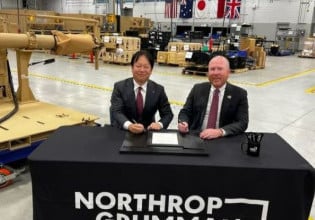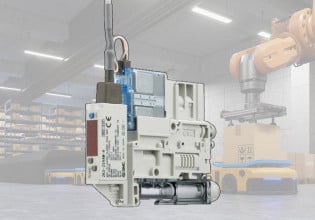VisionNav Develops Computer Vision Solutions for Warehouse Automation With Major Investment
The company announced it will use the investment in research and development efforts in enhancing the quality of its visual control and perception software.
VisionNav Robotics provides warehouse solutions for automated material handling using different robotic platforms. VisionNav has a fleet of robots, navigating autonomously using its advanced visual navigation software, to complete warehouse operations.
What is VisionNav Robotics?
The company develops autonomous forklifts, autonomous ground vehicles (AGVs), tractor AGVs, and location detection systems. Owing to the advanced robotic technology and rising sales, VisionNav has been able to attract venture capital firms to pour more money into the company. Their robot solutions can be used for picking and put-away, storage and relocation, at reduced operational and maintenance costs. The solutions are applicable to all factories, intralogistics inside harbors and airports, and workshops.

VisionNav's AGV's. Image courtesy of VisionNav.

VisionNav's Tractor AGV's. Image courtesy of VisionNav.

VisionNav's port machinery. Image courtesy of VisionNav.
VisionNav Robotics was founded in 2016 with a promise of developing sophisticated computer vision solutions for robotic navigation. Their technology stack comprises intricate perception software, 5G network interface, and robot control algorithms deployed on several logistics vehicles. The company manufactures small mobile robots as well as retrofits existing industrial trucks with autonomous motion capabilities meant for warehousing, logistics, and manufacturing applications.
Their vision guided vehicles (VGVs) use AI and robotic algorithms on cameras and vehicle control mechanisms achieving autonomy in applications like goods loading/unloading docks, goods transportation, dynamic environments traversal, and production lines. The company has customers like Amway, Walmart, Cainiao, Gree, and DHL through the automobile manufacturing, pharma, and food industries.
VisionNav’s Latest Series B1 Funding
VisionNav secured a recent investment of 100 Million RMB in Series B1 of venture funding. The lead investor was Lenovo capital along with Flyfot Ventures and returning investor, Eastern Bell Capital. The company announced it will use the investment in the research and development efforts in enhancing the quality of its visual control and perception software stack. The company shall also accelerate the development of new products earlier staged for 2021 to address the recent increase in industrial demands while expanding its business and market share.
The Unique System Architecture
In addition to the existing five autonomous vehicles - towing trucks, pallet stackers, pallet movers, reach trucks, and combustion trucks, VisionNav also develops software solutions like multi-object detection and location detection system. The location detection system, robust to lighting issues, uses deep learning on live camera feed to detect storage locations in real-time. It can track pallets, forklifts, operators good, and other moving elements inside indoor settings. It can communicate tracking information to warehouse management systems (WMS) for intelligent and unmanned robots.
The main advantages and applications of the system are:
- Accurate identification of vehicles, goods, carriers, and objects
- Safety management against intruders with live stream
- Robust to interferences and ambient operational conditions

Location Detection Systems. Image courtesy of VisionNav.
VisionNav’s system architecture has autonomous driving software, fleet management system, and pallet detection system. The driverless motion solution comprises positioning/localization (determining the location of the robot/vehicle within the indoor environment), controls (manipulating the throttle and steering of an Ackerman drive and wheel velocities of a differential drive) and perception (using cameras and other mapping tools) modules.
They also provide fleet management solutions for their multiple AGVs, useful for multi-robot collaboration for efficient warehousing operations. The location detection system determines the pallet pick-up and drop-off location.

VisionNav System Architecture. Image courtesy of VisionNav.
Autonomous Industrial Trucks & Large Vehicles
While the industry is accelerating towards adopting mobile robots for warehouse and inventory management, autonomous solutions for larger vehicles like forklifts and trucks are highly promising but still not robust. Large industrial vehicles operating autonomously are more helpful in manipulating heavy loads but are potentially more dangerous for security and safety reasons. Vision guided solutions have a long way to go due to limitations in operational conditions, camera robustness, accuracy, precision, and computational resources. Other companies like US-based Outrider AI, have been continuing similar efforts as well.
The future of autonomous solutions for heavy machinery is more challenging due to the high-risk factors but the commercial viability is very high and keeps companies like VisionNav Robotics in the race to innovate and succeded.






